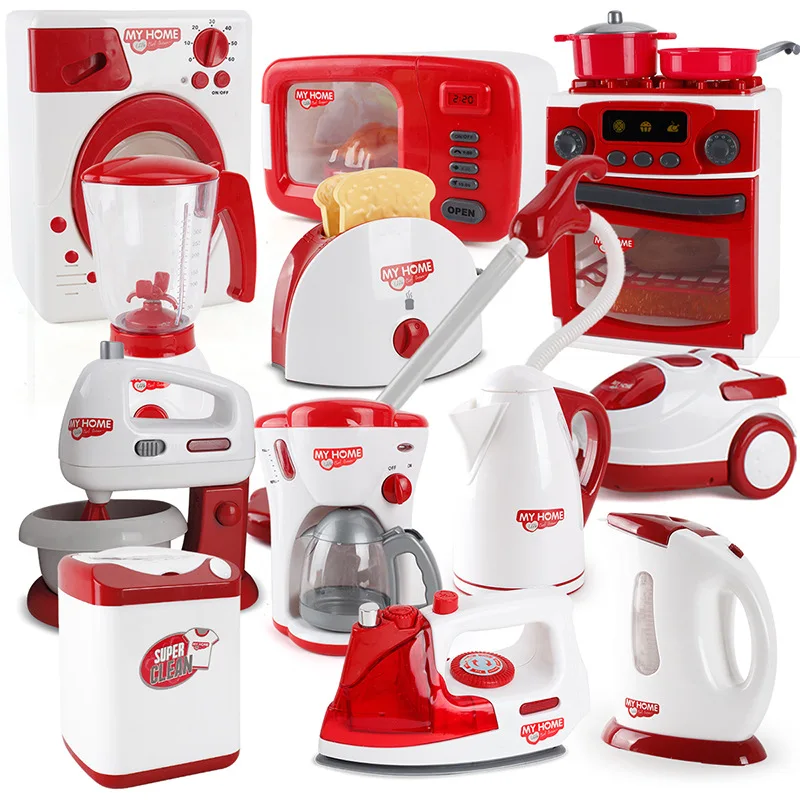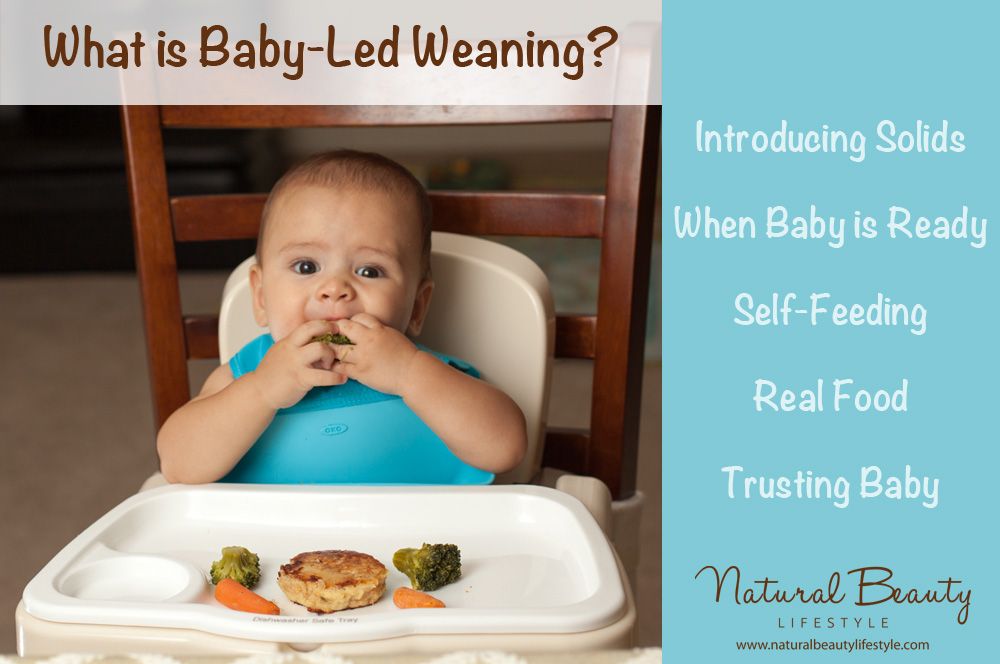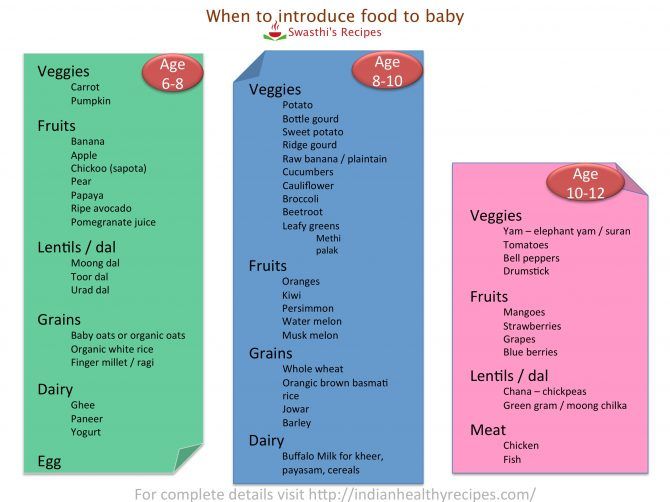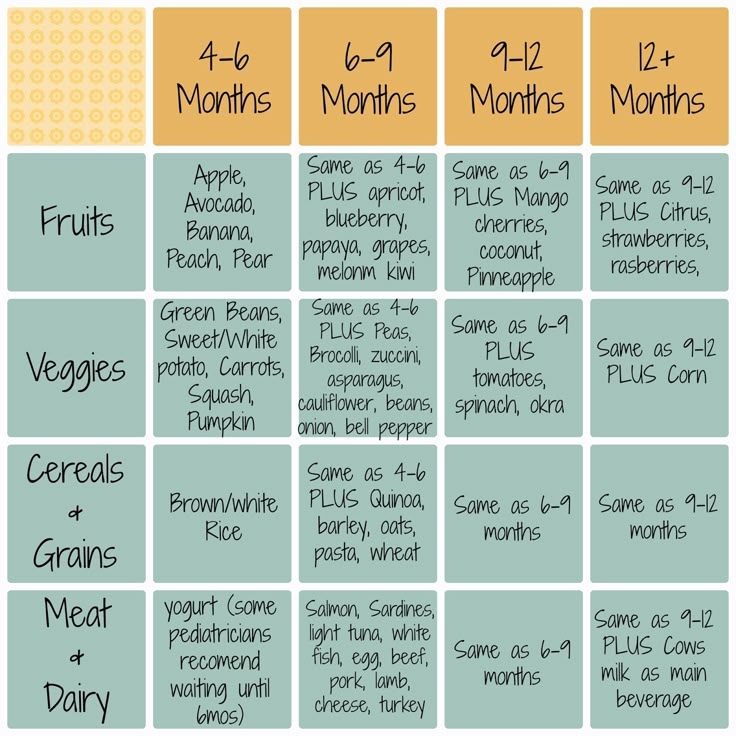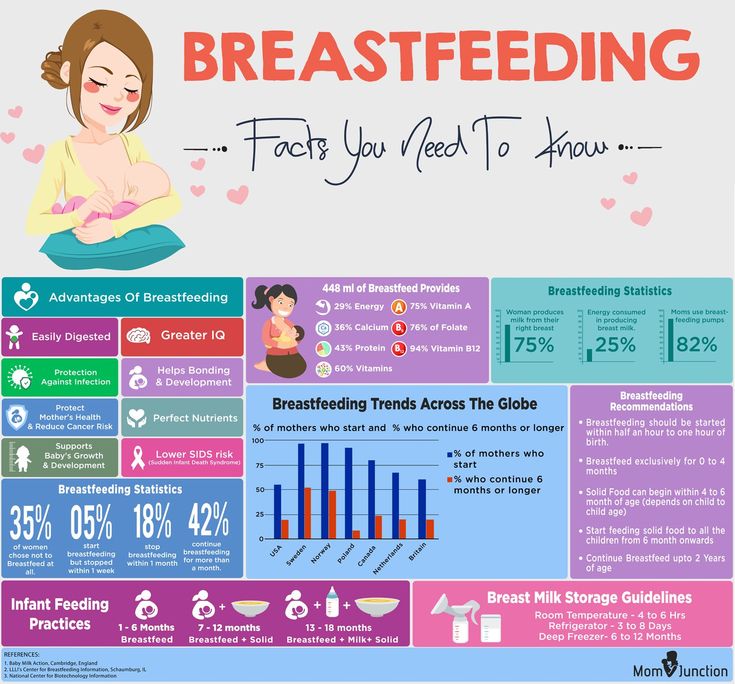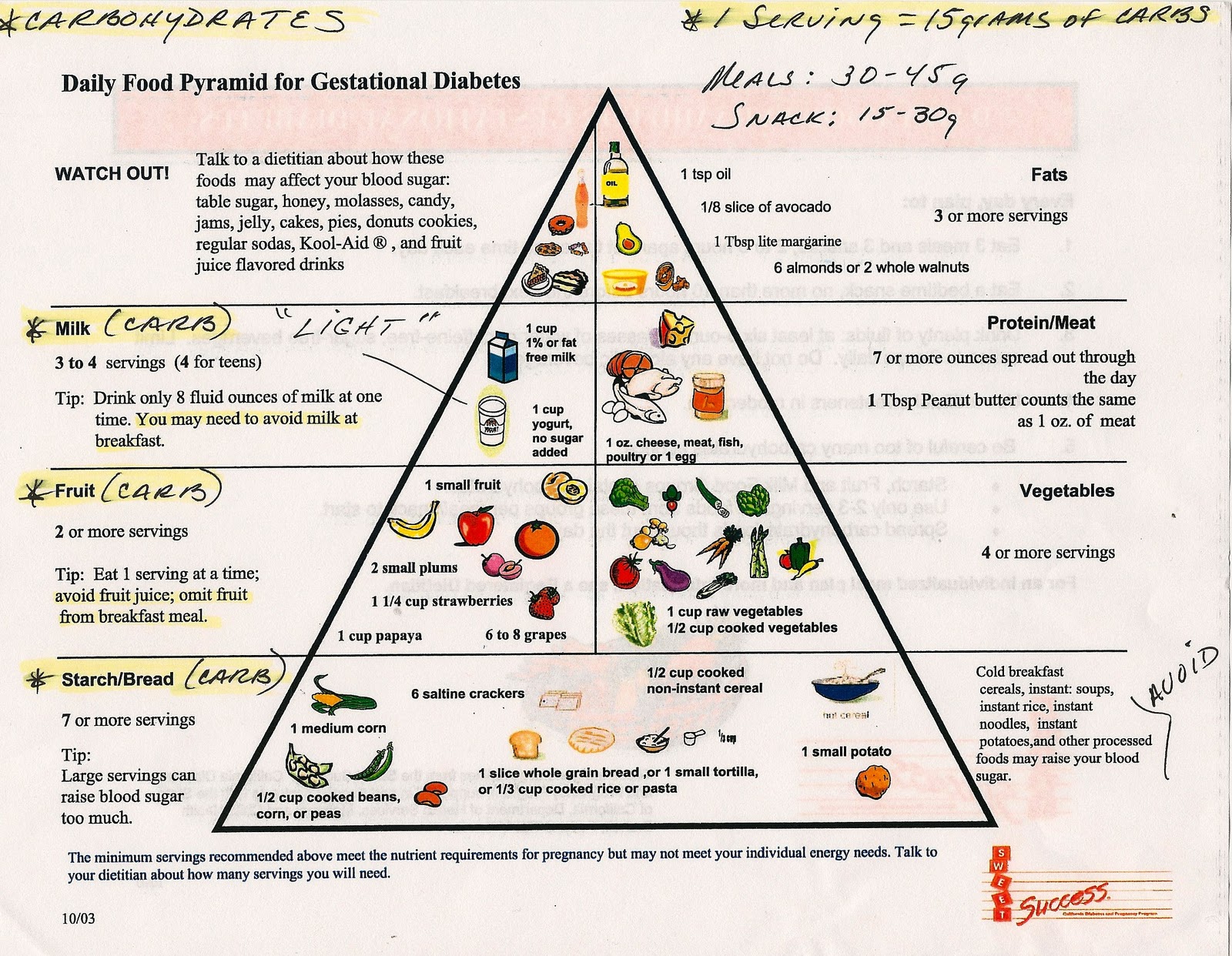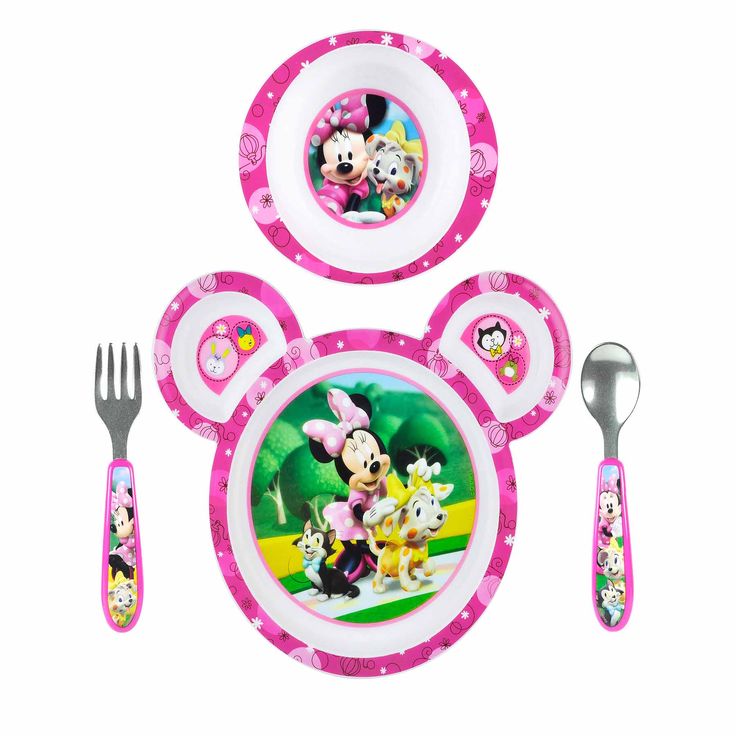When do baby kittens start eating cat food
When can kittens start eating solid food?
Search blog
All articles News Vet clinic Life as vet Ask a vet Dogs Cats
If there is one thing that we can all agree on, it is that kittens are insanely cute. Those of us lucky enough to have their homes overrun by the little critters will be very aware of the responsibility to ensure that they get the best care. A crucial part of this is successfully weaning them from milk onto solid food. The Cats Protection League survey in 2020 found that 16% of all neutered female cats have one litter before they are spayed. Given there are 5.3 million owned female cats in the UK, that equates to a lot of kittens that need to be weaned onto solids. So, whether breeding was intended, or the kittens were an accident, knowing when to start weaning them onto solid food is essential for giving a kitten the best start in life.
Table of contents
- What is the meaning of “weaning”?
- Kittens are ready to try solid foods at 4 weeks old.
- What are the pitfalls to watch out for?
- Is the timing of weaning different for hand-rears?
- You might also be interested in:
What is the meaning of “weaning”?
The Oxford English Dictionary defines weaning as to “accustom (an infant or other young mammal) to food other than its mother’s milk”. There is a second definition, which when talking about baby animals, is often conflated with the first: “accustom (someone) to managing without something which they have become dependent on”. In this context, removing the kitten permanently from the mother. This confusion is unfortunate as it suggests that kittens (and other baby animals) should be removed from their mothers when they start eating solid food. In fact, a kitten should remain with the mother at least a month after they have started eating solid food to ensure adequate socialization.
“Early weaning”, as in early separation from the mother, can result in behavioural problems. It can be a challenge in hand-reared kittens. However, here we discuss weaning in strictly the sense of introducing a kitten to solid food.
Kittens are ready to try solid foods at 4 weeks old.
Weaning a kitten from a 100% milk diet to solid food is a delicate business. Some kittens might start showing interest in their mother’s food from 3 weeks of age. Most will be ready to be introduced to kitten gruel by 4 weeks of age. At this stage, you should be actively encouraging kittens to eat solid food. Kitten gruel is a mash of high-quality kitten food mixed with kitten replacement milk formula. It is designed to be easy for the kitten to lap up.
As kittens get used to the gruel, the amount of milk added can be reduced gradually. It helps to serve the gruel in a flat dish. Such as a saucer or even an upside-down Tupperware lid if there is one to spare. This allows easy access to the food.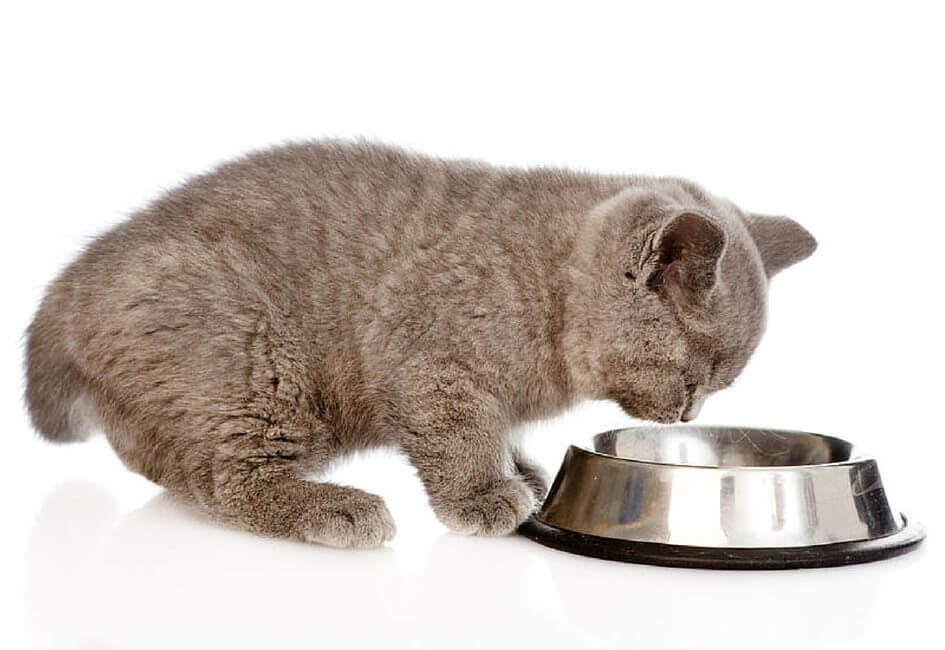 Expect feeding to be very messy for the first few days. But most kittens should complete the transition to kitten food by 6 weeks of age.
Expect feeding to be very messy for the first few days. But most kittens should complete the transition to kitten food by 6 weeks of age.
What are the pitfalls to watch out for?
Just like human babies, kittens develop at different rates. So whilst some may be chowing down their gruel in no time, they may have siblings who are struggling to get the hang of things. It may simply be that they need more time to get used to solids. Still, it is a good idea to weigh all kittens daily to pick up any problems early. Even if they are still nursing from their mother. A healthy kitten should gain at least 10 grams a day. If, after introducing solids, the kitten’s weight gain curve flattens or they become dull and lethargic, that is the cue to take the little one for a checkup with the vet to see if an underlying cause can be identified.
Is the timing of weaning different for hand-rears?
Unfortunately, no. After several weeks of relentless night feeds, the temptation to get the little darlings onto solids earlier is understandable. Nevertheless, the magic age for introduction to solids for hand-reared kittens is still 4 weeks and certainly not before 3 weeks of age.
Nevertheless, the magic age for introduction to solids for hand-reared kittens is still 4 weeks and certainly not before 3 weeks of age.
You might also be interested in:
When Do Kittens Start Eating Food? Here's What Experts Say
Consider this your guide to weaning kittens from milk or formula to solids
By BethAnn Mayer
By the time you usually bring home a brand-new kitten at eight to nine weeks old, they’ve already gone through a significant transition: being weaned from milk to solid foods. However, you may find yourself in the trenches of new kitten parenthood at an even earlier stage. If you are fostering a kitten or have found a newborn, you have likely been bottle-feeding them milk or watching their mother nurse.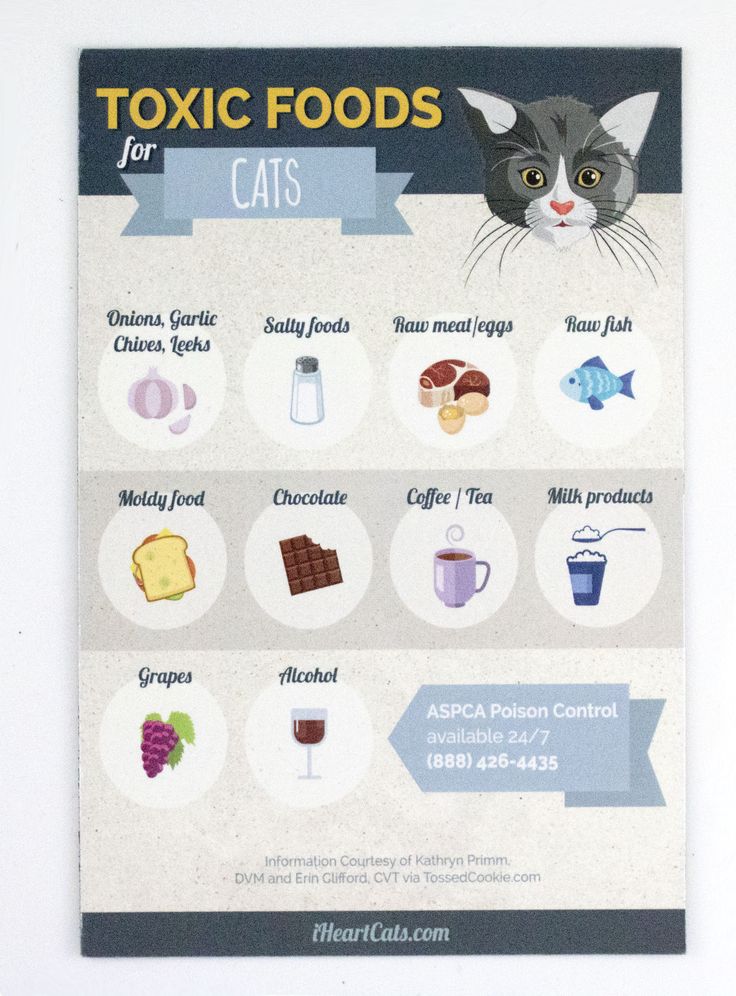
Contents
- When do kittens start eating food and drinking water?
- What do you feed a 4-week old kitten?
- How do you introduce kittens to food?
- Final word on caring for and feeding newborn kittens
In these cases, you may wonder, “When do kittens start eating food?” Weaning is usually a natural process, particularly if the Mom is involved. If you’re bottle-feeding, the process may be a bit trickier, and you may have to help lead it. Regardless of your situation, understanding what to expect can help you know when to have kibble and water on hand as a kitten gets ready to wean. Consider this your guide.
Related Videos
When do kittens start eating food and drinking water?The weaning process involves going from the mother’s milk to kibble and water, which is what a kitten will eat and drink in some form for the rest of their lives. If the mother cat is around, she’ll know when the time is right to start weaning, and it’s best not to interfere.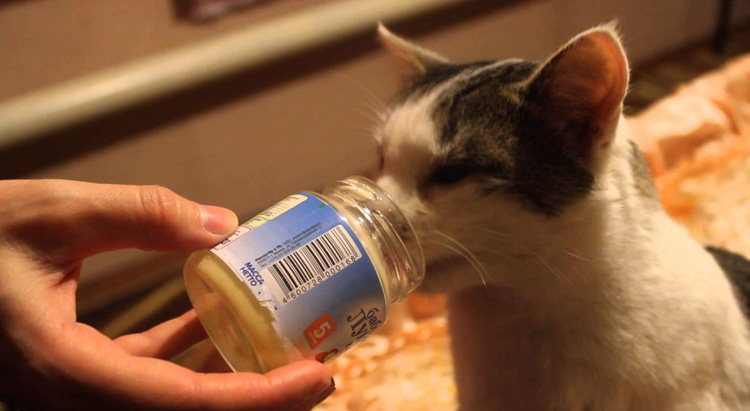
Generally, kittens will start to be ready to take small tastes of solid foods and water at around three to four weeks of age. The food and water are complimentary at this young age, so don’t worry too much if they play with it more than they eat it. They’re still getting most of their nutrition from Mom or a formula in a bottle.
What do you feed a 4-week old kitten?You’ll start by feeding the tiny cat what’s known as “gruel,” or moistened cat food, as well as some dry kibble, formulated for baby cats. A small-batch gruel recipe calls for one-half can of wet kitten food with one-quarter can of formula. Put one half of a can of gruel and dry food in one dish in your kitten’s crate and a bowl of water in another dish.
Adult cats generally drink 50 to 60 milliliters of water per kilogram or 2.2 pounds of body weight. You can put that out for a kitten, but don’t be surprised if she doesn’t drink it all. The kitten should still have formula three times per day (about every eight hours), or she should be allowed to nurse as desired.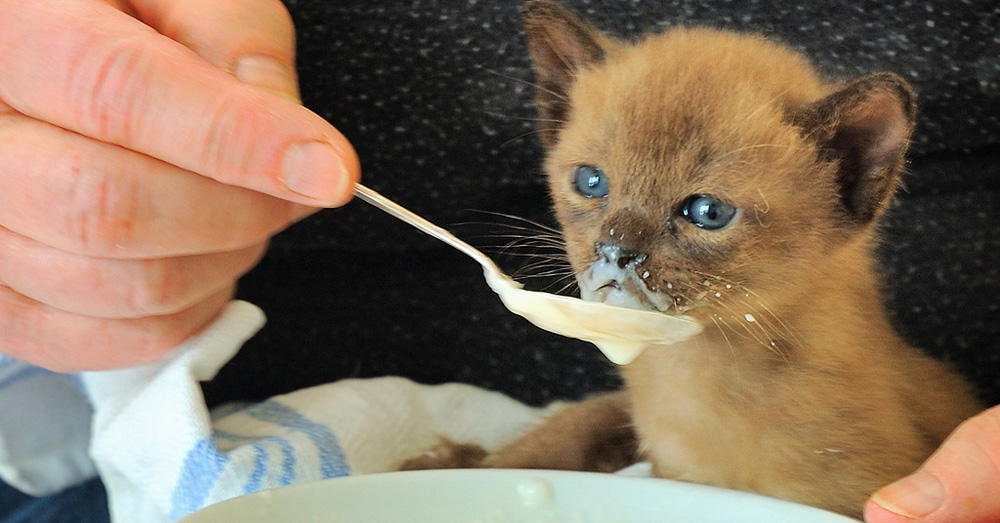
Remember, weaning is a process, and it may be a little harder for a bottle-fed kitten to navigate without the instincts of his birth mother. No need for any kitten-parent guilt, though—you’re doing a ton to help lay a great nutritional foundation for the little guy. Patience and monitoring will be essential as your kitten transitions to a new dietary source.
At four weeks, offer the gruel, dry food, and water, but don’t stress about how much the kitty’s eating. You do want the kitten to start getting used to the taste and texture, though. If you’re bottle-feeding, you can offer gruel off a spoon or from a tongue depressor if the kitten doesn’t seem to be eating from a dish.
At five weeks, swap baby cat kibble for kitten kibble and formula for water when making the gruel. If you were using a tongue depressor at four weeks, try to transition from it by slowly lowering it towards the dish of gruel to signify that’s where the food is going to be in the future.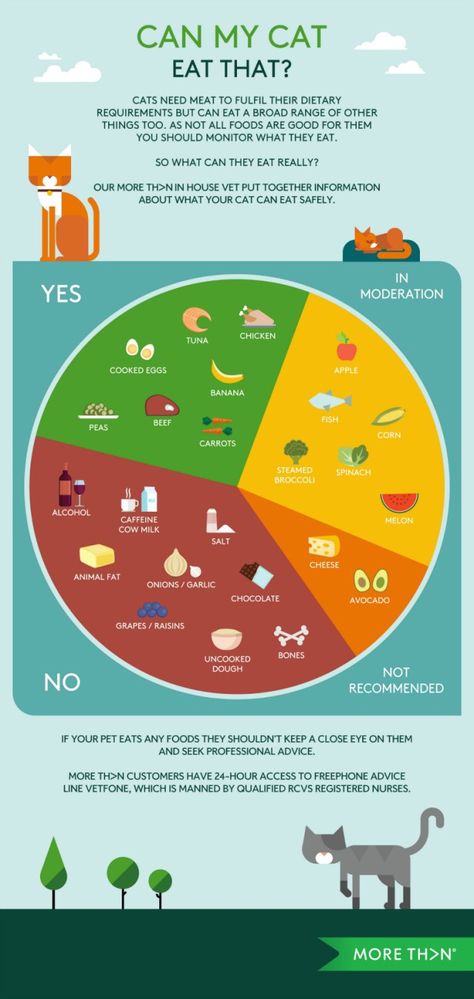 Keep half a can of kitten kibble in a dish for each kitten you are caring for, plus gruel or wet food. Set out a water bowl too.
Keep half a can of kitten kibble in a dish for each kitten you are caring for, plus gruel or wet food. Set out a water bowl too.
Weeks five and six are transitional. You want to keep feeding kittens milk or formula plus kibble to mitigate any digestive issues. Slowly reduce the amount of formula while increasing the amount of kibble. By seven weeks, the kitten should be eating mainly dry food, and he should be fully weaned at eight weeks.
Final word on caring for and feeding newborn kittens
If you’re caring for an orphaned kitten, you may be confused about when you’re supposed to start feeding him solid food. It’s a slow process that takes about a month. Weaning may also look a little different for nursed kittens and bottle-fed cats. First, let the mother take the lead if you’re looking after a mama cat and her kittens. Interfering as she weans her kittens from nursing can make it more challenging for everyone. Whether the kitten is eating from Mom or a bottle, you can start putting out gruel, dry food, and a water dish at four weeks.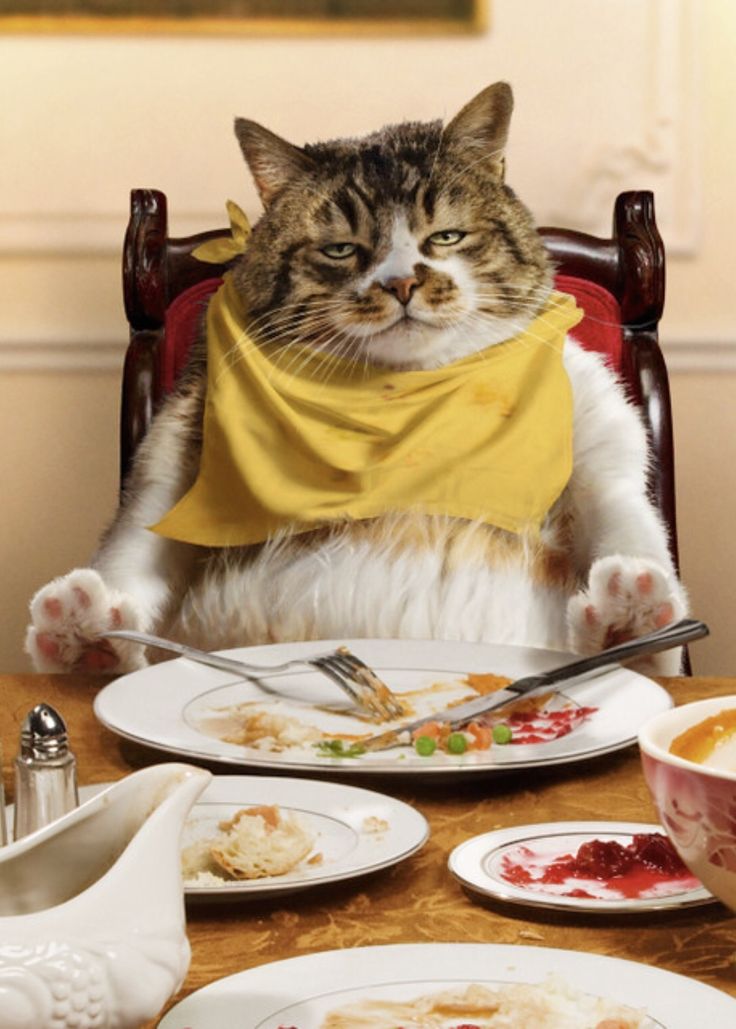 Let the kitten explore, and don’t worry too much about how much they’re eating. Most of their nutrition and hydration are still coming from milk or formula. You’ll gradually reduce the amount of milk or formula the kitten gets while increasing solid foods, and eventually, your kitten will only eat cat food and will only drink water. As always, discuss any concerns with a vet.
Let the kitten explore, and don’t worry too much about how much they’re eating. Most of their nutrition and hydration are still coming from milk or formula. You’ll gradually reduce the amount of milk or formula the kitten gets while increasing solid foods, and eventually, your kitten will only eat cat food and will only drink water. As always, discuss any concerns with a vet.
Editors' Recommendations
- Why you shouldn’t feed your dogs trail mix
- Why your cat is peeing everywhere (and what to do about it)
- Does your dog drink a lot of water? Here’s when you should be concerned
- When do kittens’ eyes change colors? The answer is pretty cool – Here’s what to know
- How long can cats go without food or water? It’s less time than you think
When can a kitten be given dry food
The appearance of a new friend in the family is always happiness.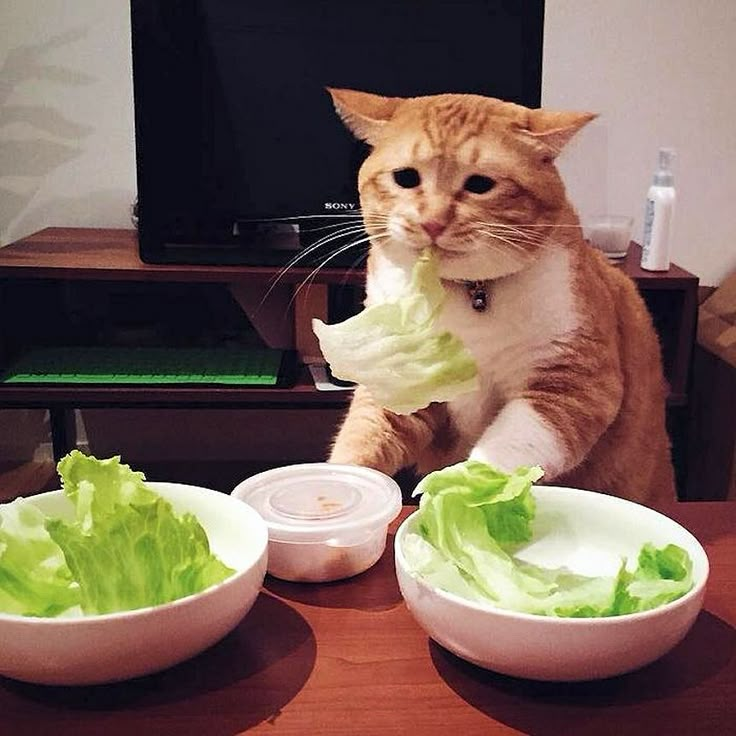 A small lump brings warmth and comfort to the house, as well as an important question: how to feed a kitten? You need to monitor the nutrition of the baby from the first days of life. And the most crucial moment is the transition of the kitten from wet food to dry food.
A small lump brings warmth and comfort to the house, as well as an important question: how to feed a kitten? You need to monitor the nutrition of the baby from the first days of life. And the most crucial moment is the transition of the kitten from wet food to dry food.
After birth, the mother takes care of the nutrition of the kitten. Colostrum, and later mother's milk, is a natural and healthy food for kittens up to 2 - 2.5 months. Cat's milk contains twice as much fat as cow's milk, and contains about three times more protein. With such nutrition, the kitten will receive everything necessary for healthy growth and development.
If for some reason the cat does not have the opportunity to feed the litter, or there is not enough milk, there are worthy analogues in pet stores. The sucking reflex in a kitten appears even in the womb, so any responsible owner will be able to feed the kitten on their own. Veterinarians do not recommend preparing a nutrient mixture for a kitten yourself, because the kitten's digestive system is sensitive, and immunity is just beginning to form.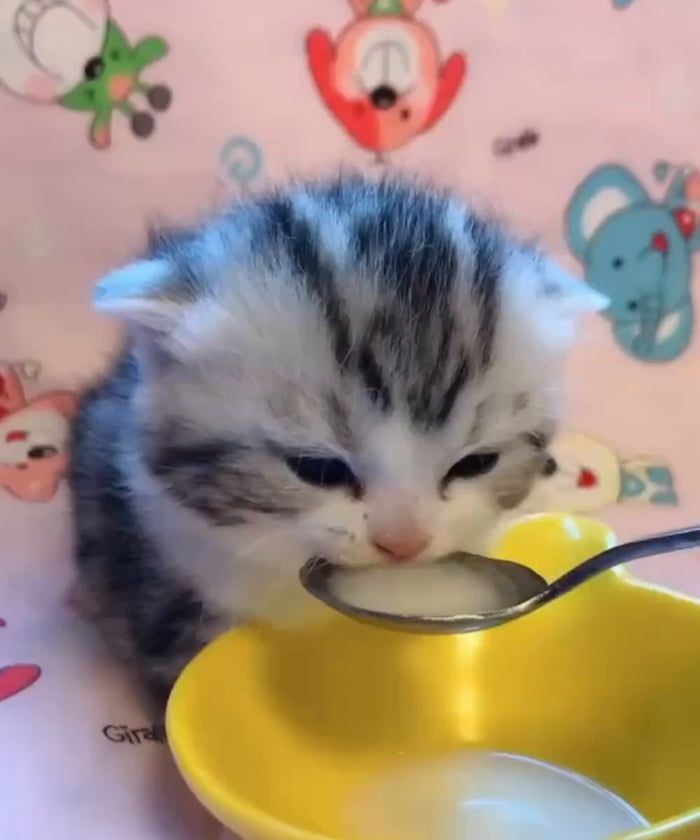 ROYAL CANIN Babycat Milk is suitable for kittens from the first birthday up to 2 months. It comes with a feeding bottle and instructions. With this kit, you can feed your kitten up to 1-2 months before switching to dry food.
ROYAL CANIN Babycat Milk is suitable for kittens from the first birthday up to 2 months. It comes with a feeding bottle and instructions. With this kit, you can feed your kitten up to 1-2 months before switching to dry food.
Complete transition to dry food is possible after 2 months from the date of birth of the kitten. However, the transition requires careful preparation. The first, still milk incisors, appear in kittens for 2-3 weeks of life. At 3-4 weeks, fangs appear in kittens. From now on, you can add dry food to your little pet's diet. At this time, it serves only as an addition to the main diet, so that the kittens get used to solid food. It is not necessary to soak the food in water or milk, even the milk teeth of a kitten will perfectly cope with this food. The only important point is the size of the croquettes. Dry food should be just for kittens. You can not give the kitten food for adult cats, because it can simply choke on large granules. Not to mention, the nutritional needs of kittens and adult cats are different.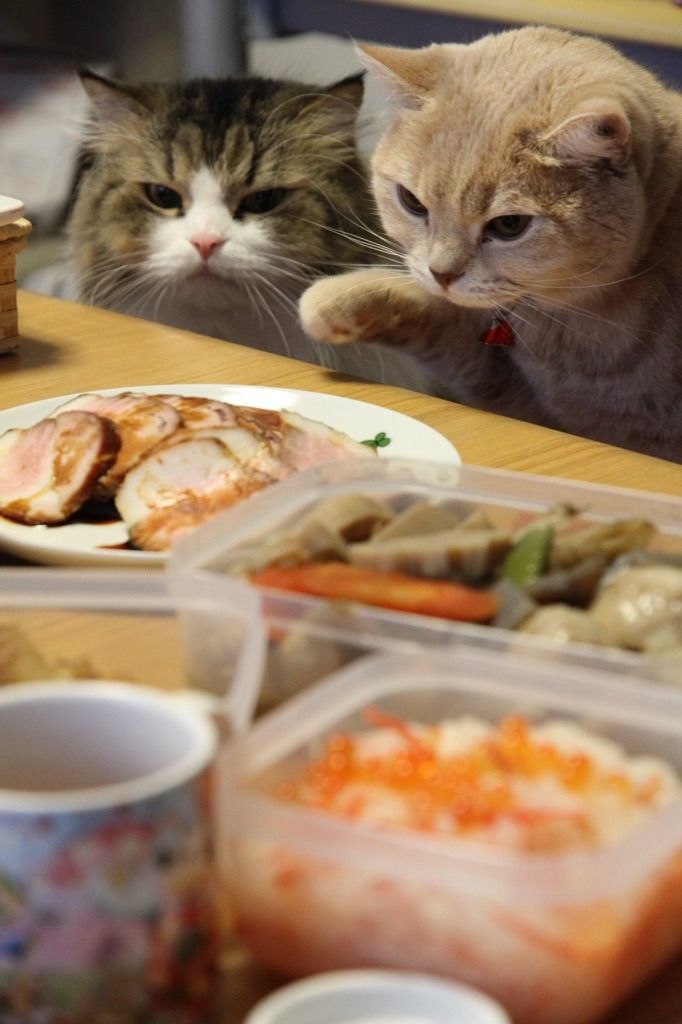
If the kittens show no interest in dry food, you may need to wait a little longer. The decisive signal will be the moment when the kittens begin to gnaw on the surrounding objects. This is a natural reflex that helps kittens explore the world. From this period, you can definitely start the transition to a new, dry kitten food.
Choosing the right dry food for a kitten
In every pet store you can find lines for adult cats and lines for kittens. The rulers are divided among themselves for good reasons: the size of the granules and the energy value.
Despite their modest size, a kitten needs more energy than an adult cat. Up to a year, a kitten's skeleton is formed, muscle mass grows, teeth are renewed and immunity is established. Babies are generally more active and mobile. All this requires energy, which the little fidget receives from the feed. On average, a kitten needs 25% more calories than an adult cat. If you feed a kitten with adult cat food, he may experience a lack of energy. As a result, problems with the formation of the skeleton, teeth, immunity or muscle mass. Therefore, in the first months of life, the kitten should eat special food.
If you feed a kitten with adult cat food, he may experience a lack of energy. As a result, problems with the formation of the skeleton, teeth, immunity or muscle mass. Therefore, in the first months of life, the kitten should eat special food.
However, there are exceptions - Super Premium and Holistic. Many of these diets can be included in the diet from 2-3 months. So, for example, GO food can be given to a kitten from 2 months of age. A lower calorie content in this case is solved by increasing the portion for the kitten, according to the feeding norms. But why not do this with economy and premium food? It's all about the calorie sources. In premium feeds, meat occupies up to 20% of the composition. The rest of the feed can be vegetables and cereals. With an increase in the volume of a portion of the economy segment feed, the pet will eat more cereals, and only a little more meat. Such a diet is contraindicated for a baby whose body is just being formed. At the same time, Akana feeds contain up to 60% meat, and legumes serve as a source of carbohydrates in them.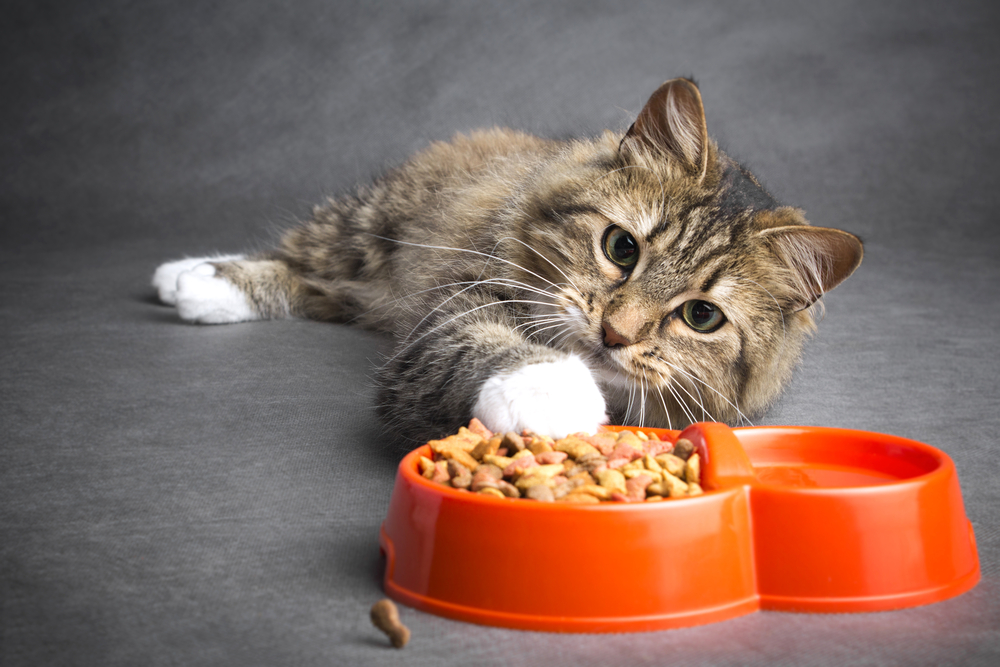 This food is biologically compatible with the cat's natural diet.
This food is biologically compatible with the cat's natural diet.
The composition will help you determine if a given food is right for your kitten. Earlier we wrote about what modern feeds consist of and how they are produced. The principles for selecting ingredients in kitten food are the same as for adult cats. The special needs of a kitten include an increased protein content. Make sure that the meat in the composition goes on the first line. It is also recommended to avoid foods that contain by-products and meat ingredients, indicated in general terms, without a percentage. For example, the line "meat and offal of animal origin" should alert the responsible owner. If the manufacturer included lamb fillet in the feed, he would openly write about it. The silence of the ingredients suggests that the meat in the feed is far from being of the highest quality. If for an adult cat such a diet can be called acceptable, then the kitten's weak digestive system may not be able to cope with the digestion of offal.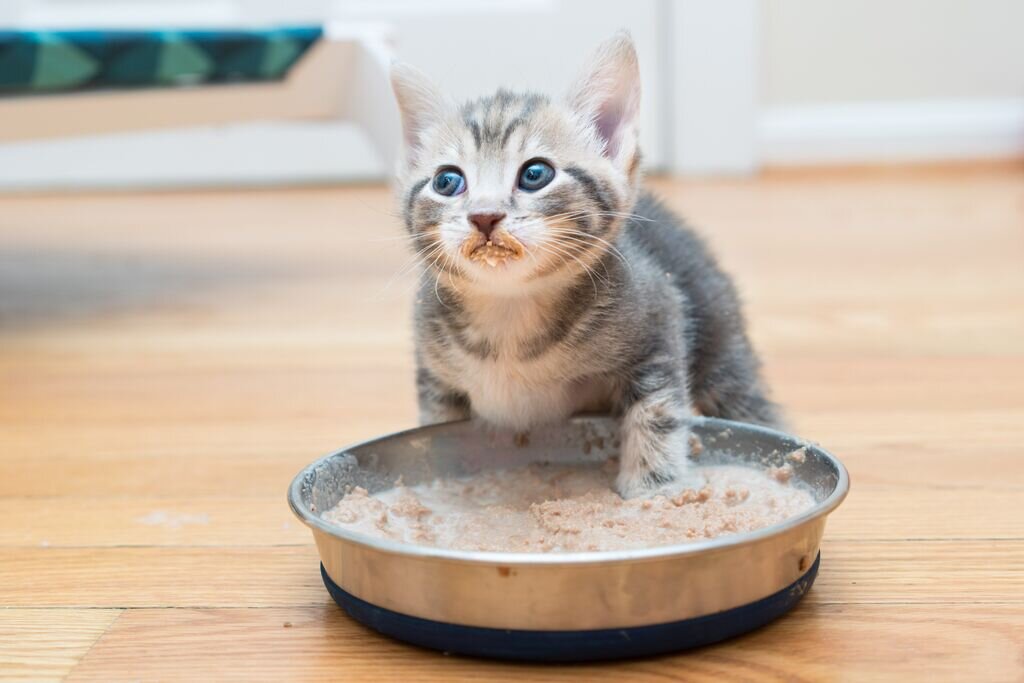 From here, the kitten may have vomiting and problems with the stool.
From here, the kitten may have vomiting and problems with the stool.
When choosing a dry diet for a kitten, it is better to immediately think about what brand of food you want to feed your pet in the future. Indeed, upon reaching one year, the kitten will have to switch to food for adult cats. Lines of 90% of manufacturers have food for both adults and kittens. The transition between two lines is easier if they are the same brand of food.
How to accustom a kitten to new food
The basic principle is simple - you need to smoothly introduce dry food into the kitten's diet, observe the results and increase the amount of dry food in the diet. Carefully monitor the reaction of the kitten's body and adjust the diet in accordance with it. So the pet can easily switch to dry food.
What happens if you completely replace the diet with dry food?
A kitten can completely switch to dry food only after reaching a certain age.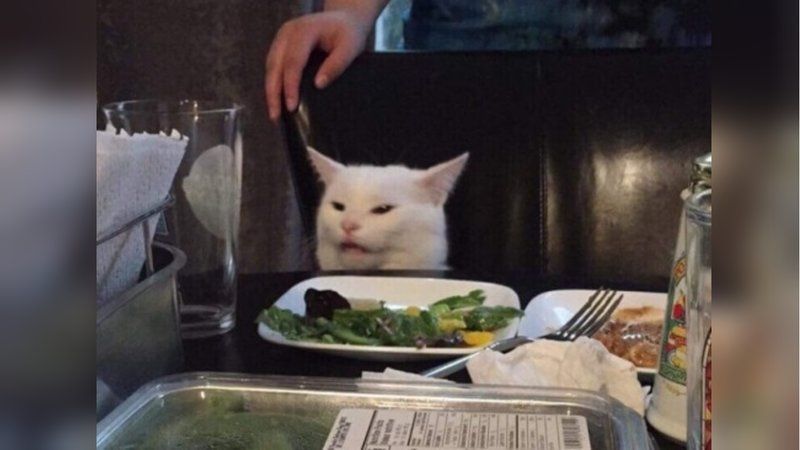 As a rule, it is 2-3 months. The food itself, to which the pet passes, is also important. It must be complete.
As a rule, it is 2-3 months. The food itself, to which the pet passes, is also important. It must be complete.
It is not recommended to transfer a kitten under 2 months to dry food, even if you soak it with water. It's all about the needs of the kitten during this period. Until 2 months old, a kitten needs a lot of energy from food. He can get it from his mother's milk or kitten formula. Both those and others contain much more protein and fat as a source of energy. If the kitten switches to dry food before the end of the feeding period, he may have developmental problems.
A kitten that has reached the age of two months can be safely transferred to a complete dry food diet. It contains enough nutrients for a full life and growth. The main thing is that the food is formulated specifically for kittens, or, in the case of holistics, shown to kittens from two months of age. Also, you can not transfer the kitten to dry food in one day. This process requires attention and should be carried out for at least a week.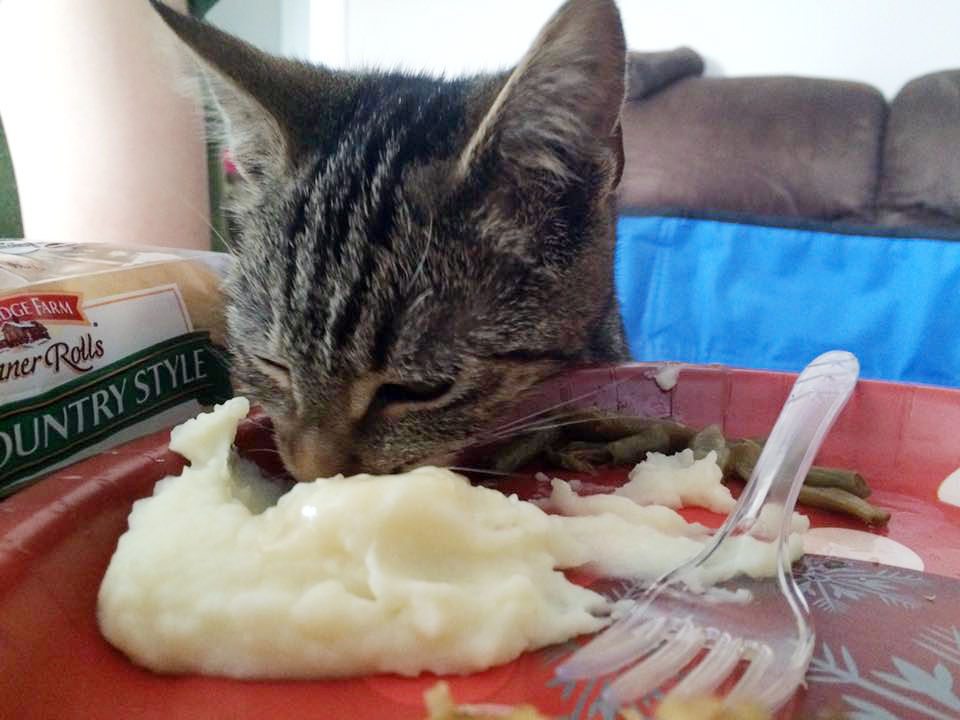 It is necessary to gradually introduce dry food into the feed ration and reduce the number of milk intakes.
It is necessary to gradually introduce dry food into the feed ration and reduce the number of milk intakes.
“There is an opinion that ready-made diets, in particular dry food, somehow stimulate the appearance of urolithiasis. Actually it is not. On the contrary, ready-made diets are balanced in terms of the content of proteins, fats, minerals, microelements and are aimed at preventing urolithiasis,” Vasily Shilov, Candidate of Veterinary Sciences.
Modern dry food does not cause dehydration or digestive problems. They don't need to be soaked. The main thing is that the cat has constant access to a bowl of water. Therefore, after reaching two months, you can safely switch to only dry food.
« High-quality dry food contains a lot of meat or fish, a balanced complex of vitamins and minerals, taking into account the age and health of the animal. This food is suitable as a permanent diet, and there is no need to add canned food to it”,
– Vastab PetCity clinic veterinarian Rannamõisa Marja Roosileht.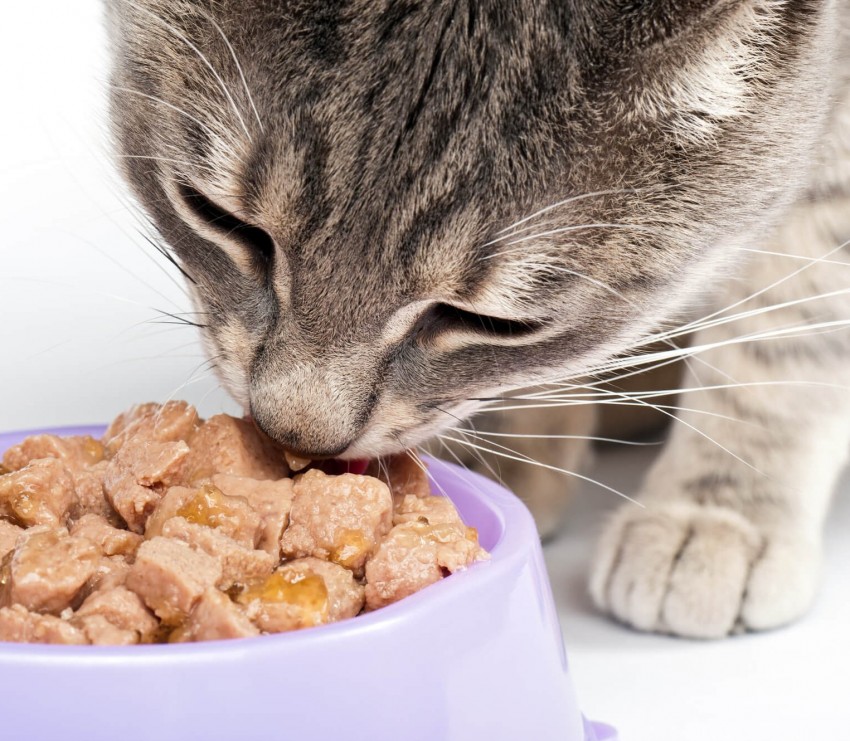
However, to diversify the diet, you can periodically include wet food in his diet. It's great if the brands of your dry and wet food are the same. If the manufacturer that produces the line of dry food does not have a wet food, look towards super-premium and holistic wet food. As a rule, they are 60-80% meat and will not harm the pet.
PlanetaZOO recommends
The choice of dry food for a kitten depends on its growth and further development. A small organism is sensitive to nutrition, and therefore the choice of food should be approached with all responsibility. A selection from Planet ZOO will help you navigate among manufacturers and not get confused when choosing food in pet stores.
1. Mr. Buffalo
Premium complete food. The main source of protein in the feed is chicken meat (36%), and carbohydrates - whole grain rice. The food strengthens the immunity of babies, increases resistance to diseases. B Due to the high meat content, the food is easy to digest and assimilate, has excellent taste and is suitable even for picky pets.
B Due to the high meat content, the food is easy to digest and assimilate, has excellent taste and is suitable even for picky pets.
2. Brooksfield
Super premium food from sunny Italy. As part of 57% of meat ingredients, hypoallergenic rice acts as a source of carbohydrates. The food is rich in vitamins due to the addition of fruits and vegetables. Suitable for both pregnant cats and kittens from one month old. It turns out that by buying a large pack you can feed both mother and kitten. A good option in terms of price - quality.
3. Royal Canin
Premium food with the widest range for babies. Babycat Milk is a milk that can be given to a kitten from birth up to 2 months. Mother & Babycat (mousse) wet food, 2 to 4 months. Dry food of the Kitten series, for feeding kittens up to a year. Thanks to a wide range of products, you will be able to smoothly transfer a kitten from a wet type of food to a dry one. This is the brand of food recommended by most breeders.
4. Karmy
Premium food from Russia. Promotes a healthy and improved digestive system, allowing your kitten to grow up strong, active and healthy.
From how many months can a kitten be given dry food, from what age can only dry food be given to kittens
|
Dear customers!
|
01/21/2019
Kittens are fed with adult food while they are still feeding on mother's milk, but not before they grow milk teeth. This happens at 4-7 weeks of age. From how many months can a kitten be dry food as the main type of food? Given that accustoming to a new diet should occur gradually, which requires an average of 10-14 days, you can safely give kittens dry food for breakfast, lunch and dinner from the age of 1.5-2 months. In this article, we'll show you how to get started.
Kittens that grow up with a mother who eats dry food quickly get used to its sight and smell, and as soon as they get such a physiological opportunity, they begin to taste the granules on the tooth. As a rule, for such animals, accustoming to a ready-made industrial diet occurs easily and naturally, and therefore does not require any special tricks.

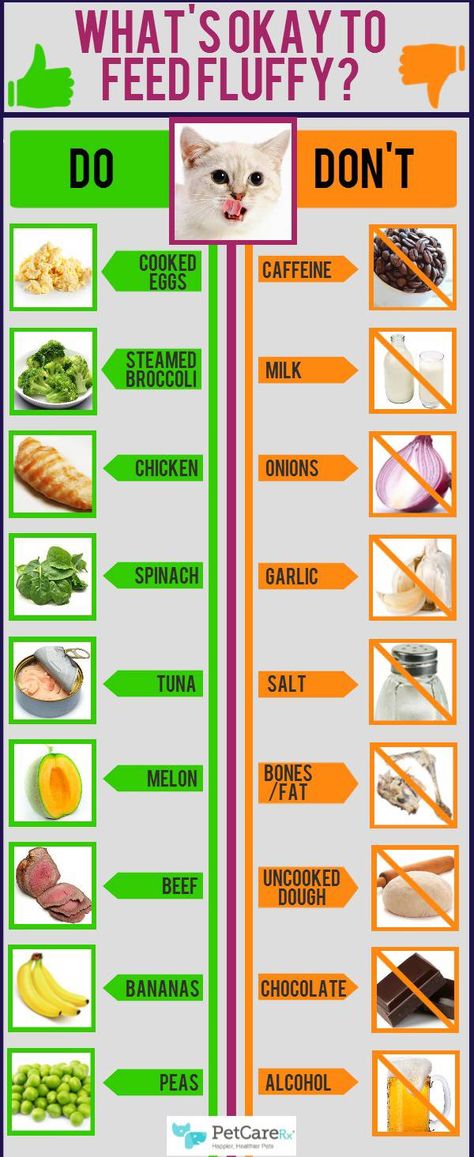 When creating these rations, we focused on the experience of Canadian specialists, so the compositions are as close as possible to biologically appropriate nutrition.
When creating these rations, we focused on the experience of Canadian specialists, so the compositions are as close as possible to biologically appropriate nutrition. 